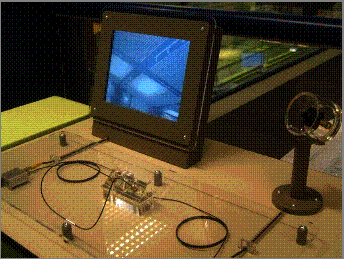Sending Information by Light Beams
Transmission > Sending Information by Light Beams
Optical Fibers are made of very pure Glass. They have the capacity of carrying Digital Information in the form of Optical Signals over long distances. Generally they consist of three parts: Core, Cladding and Buffer Coating, Figure 1. The Core is a thin Glass center where the Optical Signals travel. The Cladding surrounds the Core to prevent the Optical Signals from leaking out. The Buffer Coating protects the Fiber from damage.

Figure 1: The Basic Structure of an Optical Fiber
In Figure 2, a Camera is connected to the Video in of the Optical Transmitter. The Optical Transmitter accepts the Video Signal from the Camera, converts it to an invisible Infrared Light Beam, which is the Optical Signal ready for the Transmission through the Optical Fiber.

Figure 2: A Camera is connected to the Video in of the Optical Transmitter
By connecting the two Optical Fibers together, a Transmission Channel is created between the Optical Transmitter and the Optical Receiver. This enables the flow of Optical Signals between them. On the left, the Optical Receiver receives the Optical Signal and converts it back into a Video Signal, which is then outputted to the Screen.
If the two Optical Fibers are not well connected, the Optical Signal suffers High Losses, the Light Beam Attenuates and the Optical Signal may not reach the Receiver. There is no Video Output on the Screen.
Optical Fibers are widely used for Image and High Speed Data Transmission. Mainly they can be employed in Closed-Circuit TV (CCTV) System and medical equipment like the Fiberscope.
Transmission > Sending Information by Light Beams
